See the History of Ticker-Tape Parades Beneath Your Feet on Broadway’s Canyon of Heroes
Uncover the history of NYC's confetti-covered parades that have been running since the 1880s!

On February 1, 2024, a new era of subway cars dawned on the city, and New Yorkers made an ode to the orange subway seat.

Every few decades, New Yorkers bid farewell to old subway cars as a new fleet is released onto the city’s 665 miles of track. Although most New Yorkers concur that the city’s transit system needs updating, change can be bittersweet for riders, leaving behind stings of nostalgia as the new rids the old.
On February 1, 2024, a new era of subway cars dawned on New York City as the first new open gangway car, the R211T, rolled out on the C-line. These new cars are part of a pilot program and will be evaluated based on how they run and customer response. Standard R211s, without open gangways, will eventually replace the infamous orange and brown-clad subway car models of the 1970s, the R46. The R46 is the oldest car model currently in use, running on the A, C, N, W, Q, and Rockaway Shuttle lines. These cars have been riding the rails for nearly 50 years. To sprinkle some perspective, “The average age of MTA subway cars is 25 years old,” MTA Chair and CEO Janno Lieber said in a press release.
As news set in that the transition from orange to blue seats would soon greet commuters, New Yorkers took to social media to share comments of heartbreak, relief, and uncertainty. The conversation started with a Threads post by Manhattan Borough President Mark D. Levine. Levine says he will miss the orange seats. We’ve collected a few farewells (and good riddances!) to the orange subway seat here.
User @evaelfassyb posted, “I remember when they had just came to use, I was starting high school at City as School. All the way to Hoyt Street from Forest Hills, Queens.” Throwing it back even further, @marylynchtheater shared, “I got over missing the straw seats on the E and F to Brooklyn 💝 (granted they were “old” back in the 60s, but they were itchy and kind of intriguing 😆).” You can see what those looked like in our list of vintage subway car amenities, here!
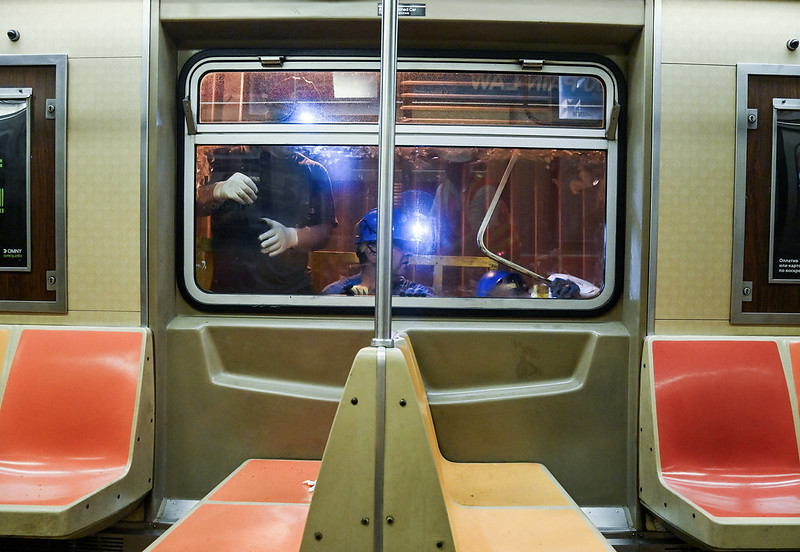
@robertallengreer commented, “They have a certain Sesame Street charm, but the newer parallel designs are way more comfortable.” Threads user @brooklynspoke was more emphatic about their love for the vintage design posting in response to this article, “My entire philosophy as an advocate and urbanist is that cities change and part of the contract you sign when you live in one is that you have to be okay with that BUT FOR THE LOVE OF GOD DON’T TAKE MY ORANGE SUBWAY SEATS OR THIS CONFIGURATION PLEASE.” Threads user @robincforman28 said, “They’re iconic!”
Untapped Chief Experience Officer Justin Rivers shared his ode to the orange subway seat, saying, “The most coveted seat was the one tucked away in that window “nook” where you could rest your arm on the ledge and stretch your legs out under the seats in front of you. During a hellacious rush hour, it was like flying first class.”
Untapped New York’s founder Michelle Young also enjoys sitting in this spot. “Controversial, but I loved the weird spot at the window where you had almost no legroom. There was something cozy about it, plus I like to look out the window when I’m on mass transit.”
Other riders have a different opinion. “The configuration never worked for me. Long legs,” posted @realcopyvet. @kevin.p.leathers replied, “No, the orange seats always required a close inspection for some sort of gross substance floating inconspicuously in their shallow curvature.”
Twitter user @dpmsocial shared some insights from an engineer who worked on the seats, “Their idea was to make these trains feel like a living room, a space to communicate and get to know one another.”
“There have been many different seating plans over the years and, as New Yorkers do, we all have our favorites and usually aren’t afraid to share our opinions with others!,” Chelsea Newburg, PR & Marketing Manager for the New York Transit Museum told Untapped New York. “This holds true for more than a century of subway history. One of the coolest things about the New York Transit Museum in Downtown Brooklyn is the hands-on opportunity to board and explore our vintage trains. We invite everyone to come on down, sit on subway seats dating back to 1904, and choose your favorite from transit history.”
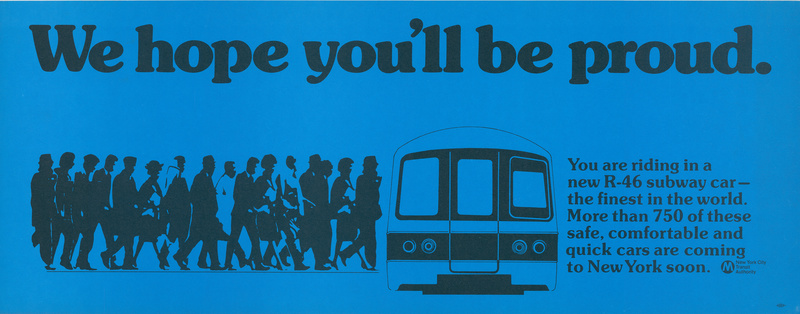
The R46 cars—with their iconic orange and yellow plastic bucket seats set in an L-pattern, faux wood paneling, and tan wallpaper covered in tiny New York City seals—date back to 1975 when they were initially introduced on the F and N lines. These cars are outfitted with rubber flooring, a more sanitary option than the experimental carpeting of the R44 fleet that was introduced between 1971 and 1973.
Jodi Shapiro, a curator at the New York Transit Museum, shared some insight into the color choices made in this model. “One of the things that is interesting about the orange and yellow seating is that it was a departure for New York’s subway system. Most of the post-war seat and interior colors tended to be on the cool end of the color spectrum (with a few exceptions), so to have warmer colors was a very noticeable change. In the late 1960s and early 1970s, the oranges and yellows were inescapable; this is in part because of the changes occurring in society – the turmoil of the 1960s is starting to temper into environmentalism and a return to nature. It’s quite a neat psychology to introduce into a transportation system.”
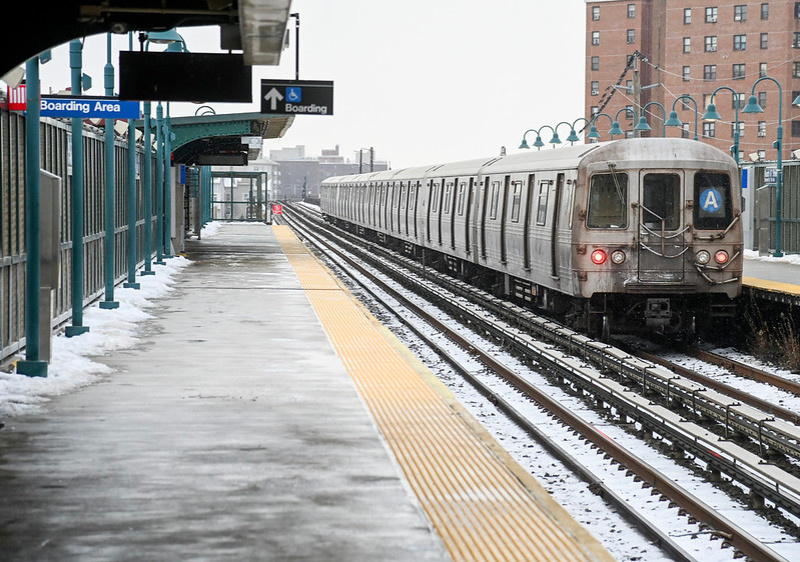
Before the cars even hit the tracks, trouble struck the fleet. The R46 contract was awarded to Pullman Standard Company. The first order was for 745 cars. This marked the largest single order of passenger cars in the United States at the time. Initially, the fleet’s delivery was set for somewhere between 1973 and 1975, but a strike at the Pullman factory pushed the final delivery back 3 years (to 1978). Then there was more trouble. Several hundred cracks appeared on the trucks or undercarriages, the part of the car that houses the wheels, axles, and other important components.
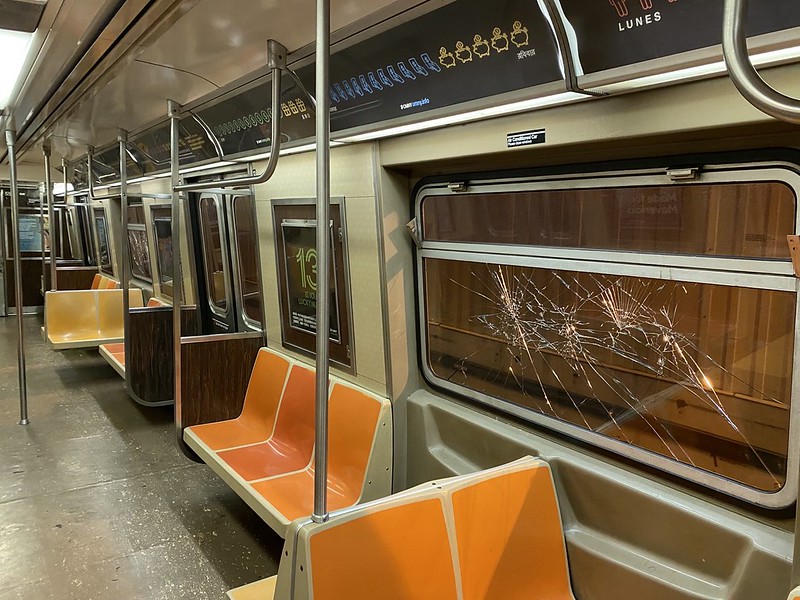
By March 1980, 1,700 cracks in the trains’ trucks were logged, leading to the city’s $192 million lawsuit against Pullman Standard, Rockwell, and four other subcontractors. Ultimately, the R46s were rebuilt from 1990 to 1992. Despite the rebuild, these cars continued to have problems like brake failures and derailments. They became known as the “most troubled cars ever purchased.”
Despite these early failures, the R46 has endured for nearly 50 years. There are still 746 R46 cars running today. The MTA plans to retire the remaining R46 cars starting in Spring 2024 and bring on new R211 subway cars in their place.
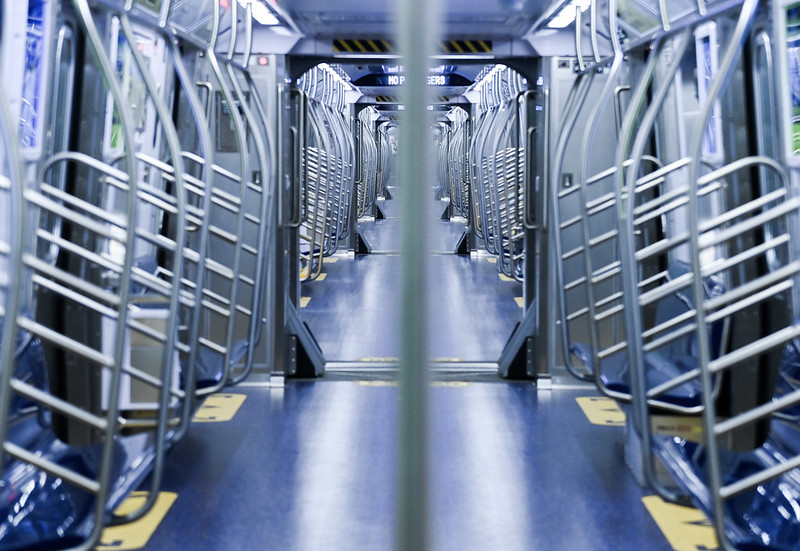
The MTA introduced two, 10-car R211T subway cars on the C-line, currently in service from Washington Heights to East New York. The new trains feature ‘accordion-type’ connections, also dubbed “open gangways,” between cars. These allow riders to move about freely from car to car. The open gangway cars are part of the MTA’s 535-car order of the R211T.
Inside the cars, improved digital displays provide passengers with more detailed station-specific information. Door-openings that are 58 inches wide—eight inches wider than existing fleet doors—facilitate quicker onboardings, shrinking train stall times in stations. Additionally, the R211T cars have increased accessible seating, feature brighter lighting and signage, and have pre-installed security cameras, features that are very similar to the standard R211s.
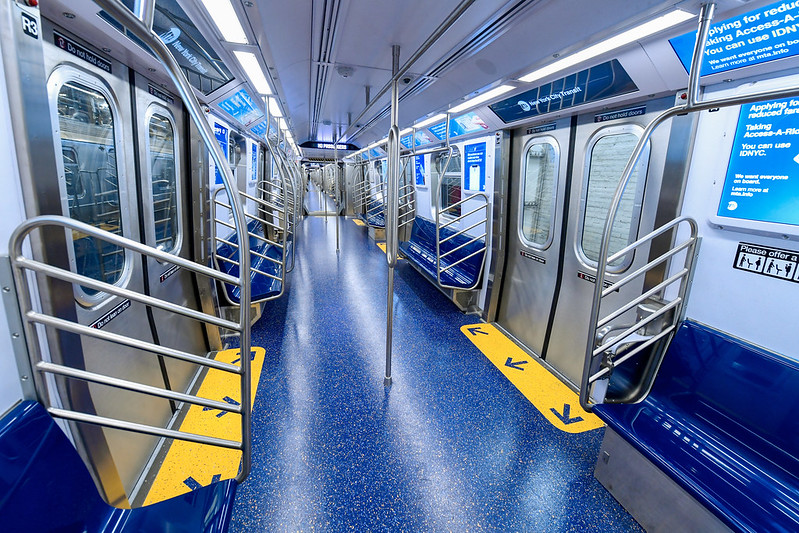
In addition to the R46 cars, orange seats can also be found inside R62, R62A, R68, and R68A cars. These models arrived in the 1980s and are slightly different than the R46 cars. Both are missing the faux wood and New York City seal wall covering and the R62s don’t have that all-important window seat.
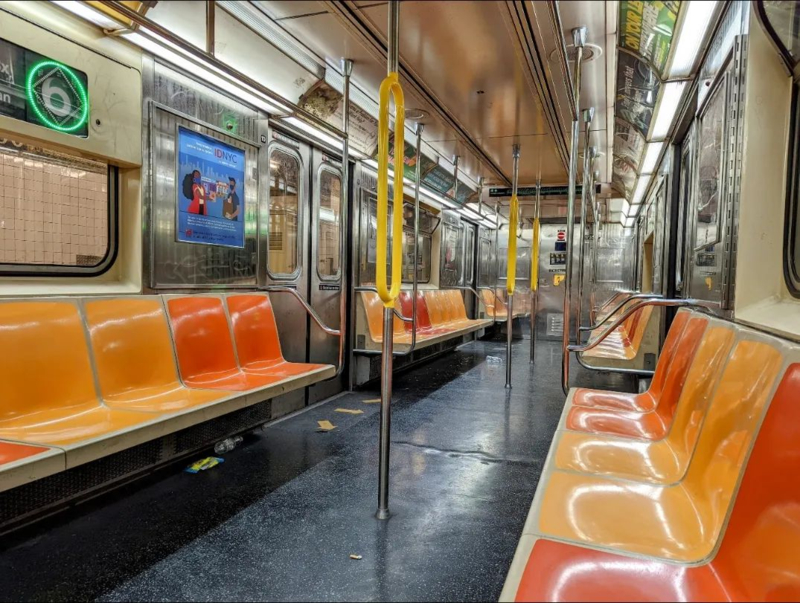
Since the subway’s opening in 1904, the system’s growth has been notable. New York City now boasts the most expansive, around-the-clock, subterranean transit system worldwide. The R211T will not be the city’s last upgrade but marks the beginning of the subway’s modernization era. So, as New Yorkers, we bid farewell to the orange subway seat and take our last hurrah morning commute aboard the R46.
Editor’s note: An earlier version of this article erroneously stated that the remaining R46s would be replaced with open gangway R211Ts.
Next, check out The Hidden Meaning Behind Colors of the NYC Subway
Subscribe to our newsletter